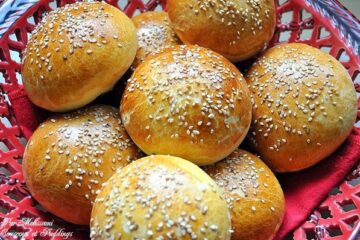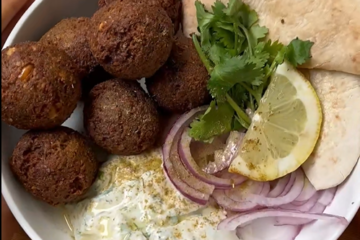In a stunning culinary showdown that brought together the finest couscous preparations from around the globe, Moroccan couscous has emerged victorious, claiming the prestigious title of World Couscous Champion. This remarkable achievement not only celebrates the exquisite flavors and techniques of Moroccan cuisine but also solidifies the country’s position as the undisputed master of this beloved dish.
The Road to Victory
The World Couscous Championship, held annually in a different Mediterranean city, attracts top chefs and home cooks from countries where couscous is a staple. However, it was the Moroccan entry that captivated the judges’ palates and secured the gold.
The road to victory was paved with meticulous preparation, the finest ingredients, and a deep understanding of the art of couscous-making. Moroccan chefs spent weeks perfecting their recipes, experimenting with different spice blends, cooking techniques, and presentation styles to ensure their couscous would stand out among the competition.
The judging process was rigorous, with a panel of renowned culinary experts evaluating each entry on a range of criteria, including texture, flavor, aroma, and visual appeal. The Moroccan team, led by a seasoned chef from the bustling markets of Marrakech, showcased their mastery of this centuries-old dish, leaving the judges in awe of the depth and complexity of their creation.
What Makes Moroccan Couscous Special?
Moroccan couscous stands out for several reasons, each contributing to its unparalleled quality and distinctive character:
Texture: The fine, fluffy texture of Moroccan couscous is achieved through a meticulous preparation process. The semolina grains are carefully rolled and steamed multiple times, resulting in a delicate and light consistency that sets it apart from coarser versions.
Flavors: A harmonious blend of spices, including saffron, cumin, coriander, and cinnamon, creates a complex flavor profile that is both vibrant and comforting. The spices are meticulously balanced, allowing each to contribute its unique aroma and taste without overwhelming the dish.
Vegetables: The abundance and variety of vegetables used in Moroccan couscous add depth, nutrition, and visual appeal to the dish. From tender carrots and zucchini to hearty chickpeas and onions, the vegetables are carefully prepared and integrated into the couscous, creating a symphony of textures and flavors.
Meat Selection: Whether it’s succulent lamb, flavorful chicken, or tender beef, the meat used in Moroccan couscous is always of the highest quality and infused with aromatic spices. The meat is simmered slowly, allowing the flavors to permeate the dish and create a harmonious balance with the couscous and vegetables.
Presentation: The artistic arrangement of ingredients, with the couscous as a golden mound surrounded by a colorful array of vegetables and meat, is visually stunning. The dish is often served in a large communal dish, allowing family and friends to gather around and share in the experience.
The Winning Recipe
While the exact recipe that secured the World Couscous Championship for Morocco remains a closely guarded secret, here’s a simplified version of a classic Moroccan couscous that you can try at home:
Ingredients:
- 2 cups couscous
- 4 cups chicken or vegetable broth
- 2 tablespoons olive oil
- 1 onion, chopped
- 2 carrots, sliced
- 2 zucchinis, sliced
- 1 can chickpeas, drained
- 1 lb lamb or chicken, cut into chunks
- 1 teaspoon each of cumin, coriander, and cinnamon
- Pinch of saffron
- Salt and pepper to taste
- Fresh cilantro and mint for garnish
Instructions:
- In a large pot, heat the olive oil over medium-high heat. Add the lamb or chicken and brown the meat, stirring occasionally, for about 5-7 minutes.
- Add the chopped onion to the pot and cook for 3-4 minutes, until the onion is translucent.
- Stir in the cumin, coriander, cinnamon, and saffron. Cook for 1 minute, until the spices are fragrant.
- Pour in the chicken or vegetable broth and bring the mixture to a boil. Reduce the heat to low, cover the pot, and let the meat simmer for 30 minutes.
- Add the sliced carrots, zucchini, and drained chickpeas to the pot. Cover and continue simmering for 20 minutes, or until the vegetables are tender.
- In a separate bowl, prepare the couscous according to the package instructions. Fluff the cooked couscous with a fork.
- Arrange the couscous on a large serving platter, creating a mound in the center. Spoon the meat and vegetable mixture over the couscous, making sure to distribute the ingredients evenly.
- Garnish the dish with fresh chopped cilantro and mint.
- Serve the Moroccan couscous warm, encouraging guests to scoop up the couscous, meat, and vegetables together.
See how to…
The Cultural Significance
Couscous is more than just a dish in Morocco; it’s a cultural icon. Traditionally served on Fridays and for special occasions, it brings families and communities together. The process of making couscous, from rolling the semolina to steaming it multiple times, is often a communal activity that strengthens social bonds and preserves culinary traditions.
In Moroccan culture, couscous is not simply a meal; it’s a way of life. Families gather around the table, sharing stories and enjoying the warmth of a home-cooked meal. The preparation of couscous is often a multigenerational affair, with grandmothers passing down their secrets and techniques to younger cooks.
Beyond the home, couscous is a central part of Moroccan hospitality. It is served to guests as a sign of respect and welcome, showcasing the host’s culinary skills and the richness of Moroccan culture. The act of sharing a meal of couscous is a testament to the importance of community and the deep-rooted traditions that define Moroccan society.
Looking to the Future
This world championship win is expected to boost Morocco’s culinary tourism and increase global interest in authentic Moroccan cuisine. As more people discover the depth and complexity of Moroccan couscous, the demand for high-quality, traditional preparations is likely to grow.
For Moroccan chefs and home cooks, this victory is a call to action to continue preserving and refining their culinary heritage. It is a reminder of the importance of using the finest ingredients, mastering traditional techniques, and showcasing the unique flavors that make Moroccan cuisine so exceptional.
Moreover, this achievement shines a spotlight on the diversity of couscous preparations across North Africa and the Mediterranean. It encourages a deeper appreciation for the regional variations and cultural nuances that make each version of this beloved dish a unique expression of its terroir and culinary traditions.
Try It Yourself
While nothing can compare to the champion couscous prepared by Moroccan masters, you can still enjoy a delicious version at home. Experiment with different vegetables and meats, and don’t be afraid to adjust the spices to your taste. Remember, the key to great couscous is in the details – from the quality of ingredients to the patience in preparation.
Start by sourcing the best-quality semolina you can find, as it will significantly impact the texture of your couscous. Invest in high-quality spices, such as saffron, cumin, and cinnamon, to ensure the flavors are as authentic as possible. And don’t be afraid to take your time, as the multiple steaming steps are essential for achieving the desired fluffy, light texture.
As you prepare your Moroccan couscous at home, embrace the communal aspect of the dish. Invite friends and family to gather around the table and share in the experience. Enjoy the process of cooking together, and savor the rich cultural heritage that is reflected in every bite.
Conclusion
The crowning of Moroccan couscous as the World Champion is a testament to the country’s rich culinary heritage and the skill of its cooks. As we celebrate this achievement, let’s also appreciate the diversity of couscous preparations across North Africa and beyond. Each version tells a unique story of culture, history, and taste.
Whether you’re a seasoned chef or a curious food enthusiast, now is the perfect time to explore the world of Moroccan couscous. With its vibrant flavors, diverse ingredients, and deep cultural significance, this dish is more than just a meal – it’s a gateway to the heart and soul of Moroccan cuisine.
So, gather your ingredients, fire up your stove, and get ready to embark on a culinary journey that will transport you to the bustling markets and familial gatherings of Morocco. Who knows? With practice and passion, you might just create a championship-worthy dish in your own kitchen.




